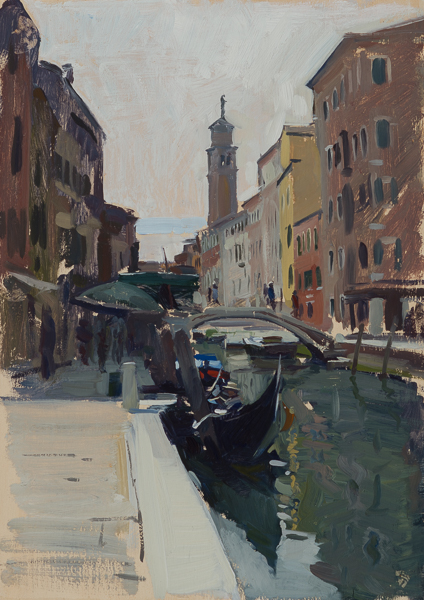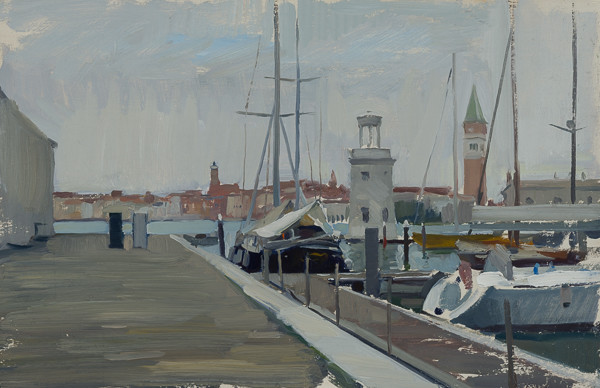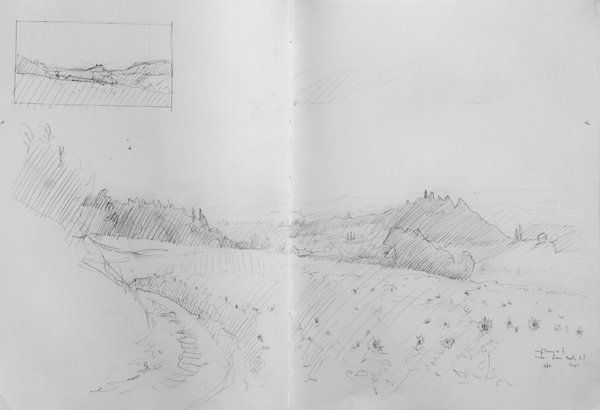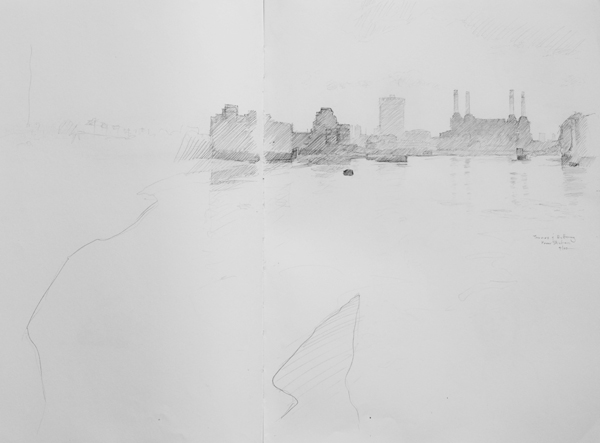
Colclough Walled Gardens #1. 20 x 30 cm, oil on panel.
I’ve been moving around a lot and haven’t been posting much, so here are paintings from the last three months. The first few are from the AITO plein air painting festival in Wexford, Ireland. It’s always a great to be back in Wexford and they always find us great spots to paint. I focused on gardens this trip, as subjects to enlarge in the future.
Most of these were already posted on my Instagram feed.

Colclough Walled Gardens #2. 20 x 30 cm, oil on panel.

Walled Garden, Woodstock Arboretum. 20 x 30 cm, oil on panel.

Curracloe Beach Painters in the Rain. 25 x 35 cm, oil on panel.
I left the next three in Ireland for the exhibition and didn’t have a chance to photograph them properly, but here they are in the field:

Ballymore Cows. 20 x 30 cm, oil on panel.

Boats at Passage East. 20 x 30 cm, oil on panel.

Bank Holiday Weekend in Wexford. 30 x 20 cm, oil on panel.
These next few are from a weekend in Zadar, Croatia where we went for a friend’s wedding:

Morning on the Riva, Zadar. 20 x 30 cm, oil on panel.

Cafe in Zadar. 30 x 20 cm, oil on panel.
Zadar, the Riva. 20 x 30 cm, oil on panel.
And finally, the paintings below are from the last couple months in Italy. I have a lot of studio work and commissions on the burner, so I haven’t been painting outside all that much.

Lunch in the Garden, Vicchio di Rimaggio. 25 x 35 cm, oil on panel.

Jory Glazner painting behind the Villa Schneiderf. 20 x 30 cm, oil on panel.

Afternoon Tea, Vicchio di Rimaggio. 20 x 30 cm, oil on panel.

Grand Canal sketch. 35 x 25 cm, oil on panel.

Grand Canal from the Accademia. 20 x 30 cm, oil on panel.















